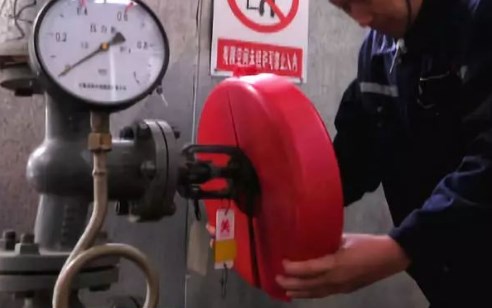10 key steps for lockout/tagout procedures
Lockout/tagout procedures involve several steps, and it’s important to complete them in the correct order. This helps ensure the safety of everyone involved. While the details of each step may vary for each company or type of equipment or machine, the general steps remain the same.
Here are the essential steps to include in a lockout/tagout procedure:
1. Identify the procedure to use
Locate the correct lockout/tagout procedure for the machine or equipment. Some companies keep these procedures in binders, but others use lockout/tagout software to store their procedures in a database. The procedure should provide information about the specific equipment parts you will work on and step-by-step instructions for safely shutting down and restarting the equipment.
2. Prepare for the shutdown
Review all aspects of the procedure carefully before you begin any work. Determine which employees and equipment are necessary for the shutdown, and ensure all employees have the proper training for participating in the shutdown. This includes training related to:
Hazards associated with the energy related to the equipment
Means or methods of controlling the energy
Type and magnitude of energy present
It’s important to reach a shared understanding among the team when preparing for the shutdown. Ensure each person understands what they will be responsible for during the shutdown and what sources of energy are present. Determine what methods of control the team will use, and complete necessary instructions related to locking and tagging-out a system before you begin.
3. Notify all affected employees
Notify all potentially affected employees about the upcoming maintenance. Tell them when the work will occur, what equipment it will affect and how long you estimate completing the maintenance will require. Ensure affected employees know what alternative processes to use during maintenance. It’s also important to provide affected employees with the name of the person who is responsible for the lockout/tagout procedure and who to contact if they need more information.
Related: 10 Tips for Maintaining Construction Safety
4. Shut down the equipment
Shut down the machine or equipment. Follow the details provided in the lockout/tagout procedure. Many machines and equipment have complex, multistep shutdown processes, so it’s important to follow the directions exactly as the procedure lists them. Ensure all moving parts, such as flywheels, gears and spindles, stop moving, and verify all controls are in the off position.
5. Isolate the equipment
Once you shut down the equipment or machine, it’s important to isolate the equipment from all energy sources. This includes turning off all types of energy sources on the machine or equipment and sources via circuit breaker boxes. Types of energy sources you may shut off include:
Chemical
Electrical
Hydraulic
Mechanical
Pneumatic
Thermal
The details of this step will vary for each machine or equipment type, but the lockout/tagout procedure should include details regarding the energy sources to address. However, ensure you neutralize every energy source at the appropriate sources. Block movable parts to prevent errors.
6. Add the individual locks
Add the special lockout/tagout devices that each team member involved has to the power sources. Use locks to lock out the power sources. Add tags to:
Machine controls
Pressure lines
Starter switches
Suspended parts
It’s important for each tag to include specific information. Each tag should have the date and time someone tagged it and the reason the person locked it out. Also, the tag needs to include personal information related to the person who tagged it, including:
The department they work for
Their contact information
Their name
7. Check stored energy
Check the machine or equipment for any stored or residual energy. Check for residual energy in:
Capacitors
Elevated machine members
Hydraulic systems
Rotating flywheels
Springs
Also, check for stored energy as air, gas, steam or water pressure. It’s important to relieve, disconnect, restrain, dissipate or make non-hazardous any hazardous energy that remains through means like bleeding down, blocking, grounding or repositioning.
8. Verify the isolation of the machine or equipment
Verify the completion of the lockout/tagout process. Ensure the system is no longer connected to any energy sources. Visually inspect the area for any sources you may have missed.
Consider testing the equipment to verify your shutdown. This may include pressing buttons, flipping switches, testing gauges or operating other controls. However, it’s important to clear the area of any other personnel before doing so to prevent interacting with hazards.
9. Shut off controls
After completing test, return controls into the off or neutral position. This completes the lockout/tagout procedure for the equipment or machine. You may begin working on the maintenance.
10. Return equipment to service
Once you complete your maintenance, you may return the machine or equipment to service. Begin the process by removing all nonessential items from the area and all operational components of the machine or equipment are intact. It’s important for all employees to be in safe positions or removed from the area.
Verify the controls are in the neutral position. Remove the lockout and tag-out devices, and re-energize the equipment or machine. It’s important to know some machines and equipment require you to re-energize the system before removing lockout devices, but the lockout/tagout procedure should specify this. Once complete, notify all affected employees you’ve completed the maintenance and the machine or equipment is available for use.

Post time: Oct-22-2022

